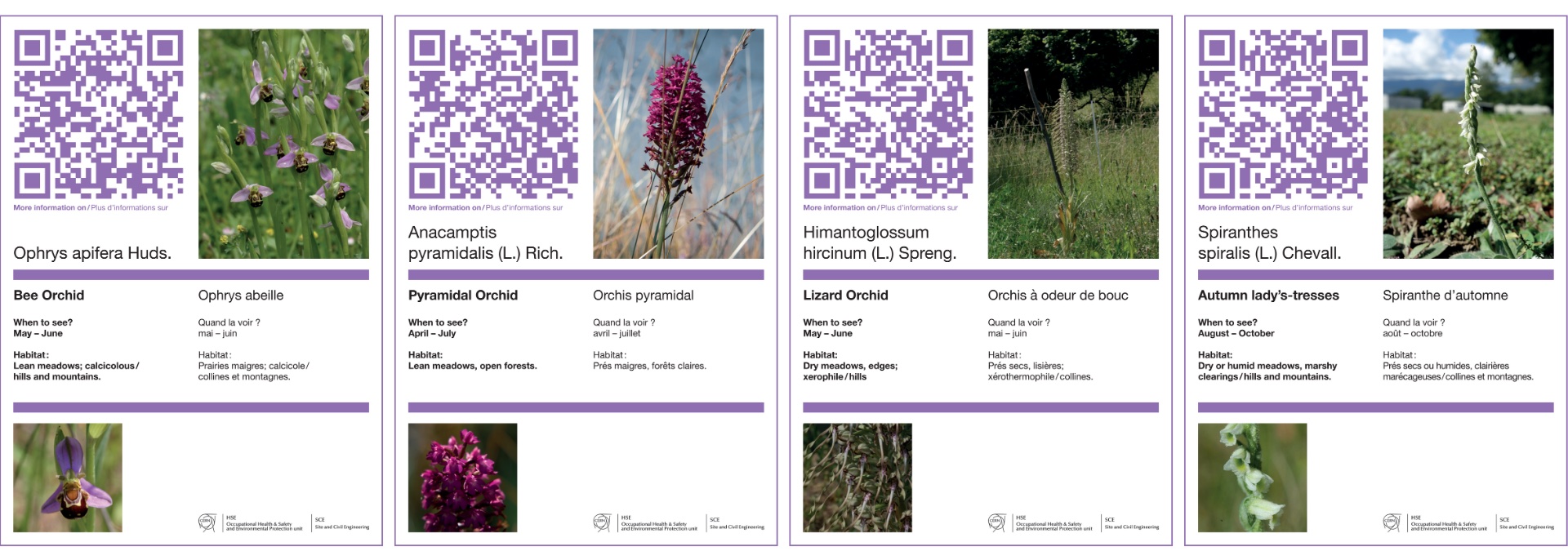CERN’s sites span 625 hectares, comprising 409 hectares of cultivated fields, recreation land and meadows, 104 hectares of woodland and three wetlands. All this land teems with wildlife, including some rare species.
While CERN has a predominantly industrial and functional appearance, it harbours a vast variety of flora and fauna that the Organization manages and preserves with great care. Several measures aim to promote biodiversity in CERN’s green spaces, with an approach based on low-intensity maintenance, keeping watering to a minimum and eliminating fertilisers and chemicals wherever possible. As you drive around the site, you might see “late mowing” signs on the verge as shown below: the reason for this is that delaying grass mowing allows the flora’s full life cycle to complete. In some places, the grass is cut the first metre or so in from the verge for road safety reasons.
In 2022, CERN carried out biodiversity surveys: these are crucial for monitoring populations and enable the Organization to identify zones of biological interest and put in place concrete protection measures. These zones are marked out on the GIS portal.* As well as cataloguing a wide range of insects, birds and amphibians, the inventory led to the identification of 13 threatened species of flora as well as two new orchid species on the CERN sites, bringing the total to 18.
To help us all identify and get to know these orchids, dedicated panels will soon be appearing around the site (also shown below), some giving you an overview of all 18 species, others focusing on a specific species that thrives in a given area. These include the bee orchid, the autumn lady’s tresses, the pyramidal orchid and the lizard orchid.
Take a moment to admire them, at a distance: please do not pick the orchids and watch your step when you walk through the meadows so that we can all continue to enjoy them for years to come.
* To find the zones of biological interest on the GIS portal, click on Data > Thematic map > Biodiversity > Surfaces d’intérêt écologique (SIE)



